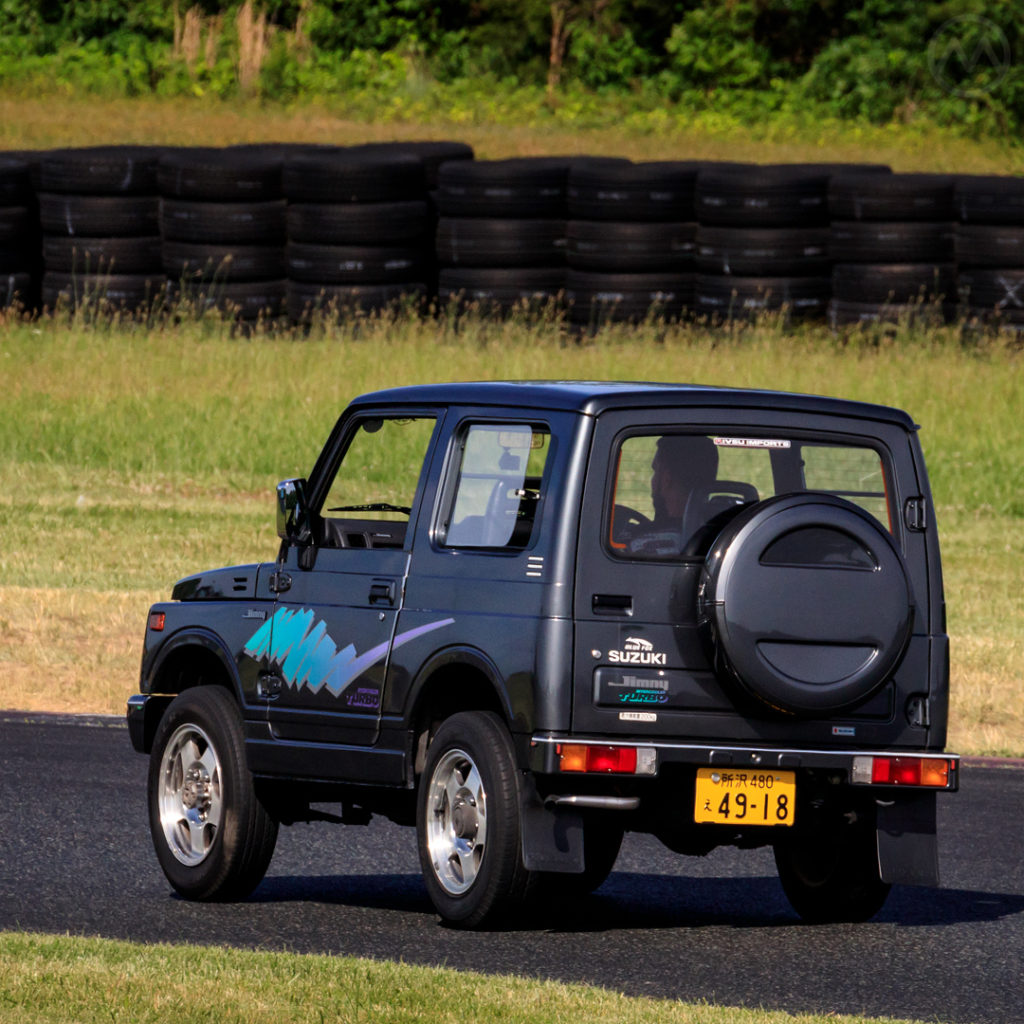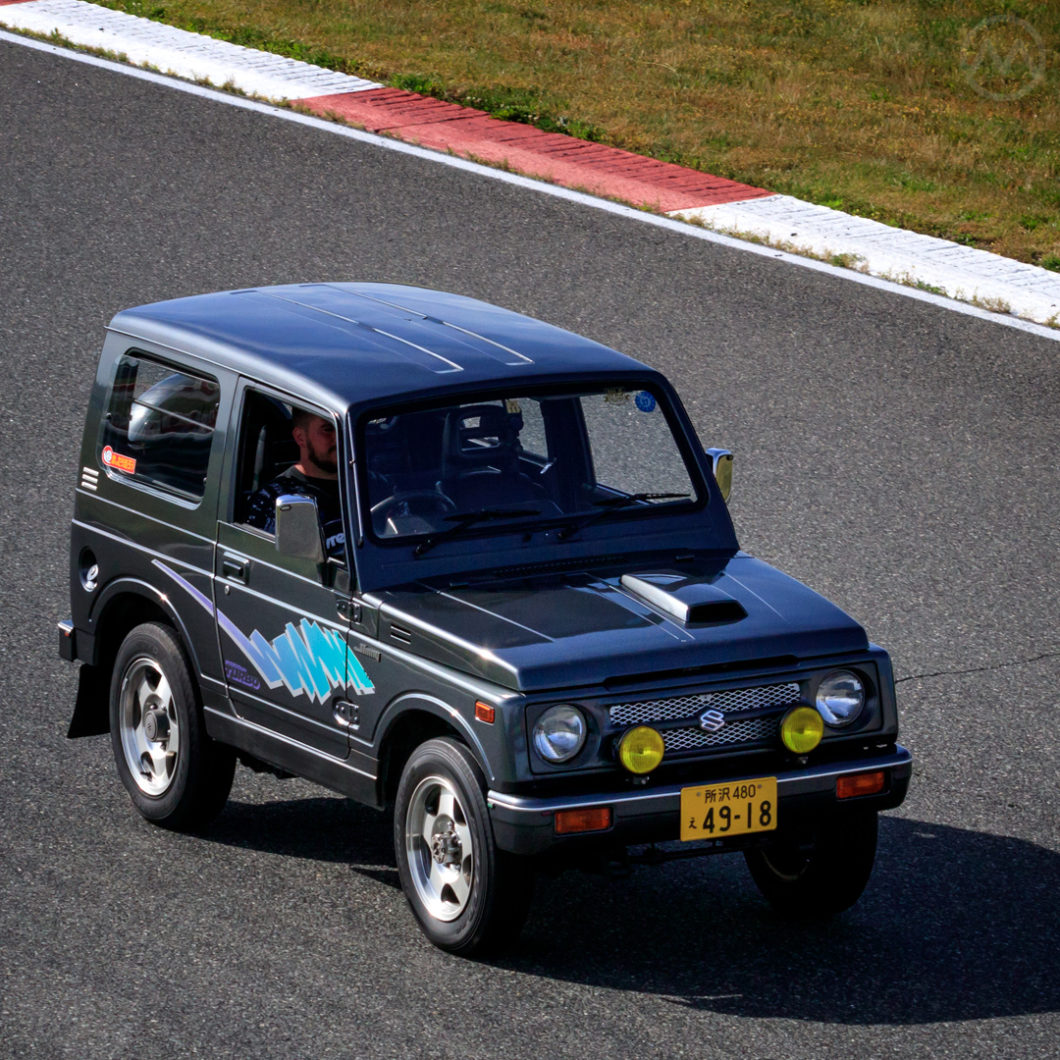Suzuki’s first U.S. model (aside from some early imports to Puerto Rico) was the Samurai, aka the Jimny SJ413 – and it was an instant hit when it debuted in 1985.
Just as it had been in Japan, it quickly becoming a darling of the 4WD community for its nimble, sure-footed nature and low cost. The SJ413 was a big hit until a fateful Consumer Reports review blunted it’s momentum (CR was forced to disavow its clams after a long court fight).
But the SJ413 was just one branch of the vast family tree of Jimnys and only one variant of the truck as a whole (each Jimny has been long-lived and multi-facted, and a new one was introduced globally in 2018).
The SJ413, with it’s four-cylinder engine and wider stance, was designed to appeal to global buyers, but it was based on what was fundamentally a Kei-class truck, those small vehicles with displacement and size limits for friendly road tax advantages. What we’re looking at here is one of those Kei Jimnys.
Small Soldiers
The 413 followed the evolution of the original 1970-1981 LJ/SJ Jimny in this regard, with the final evolution of that even smaller truck being the 797-cc SJ20 (sometimes called the LJ80), designed to peek out from the Kei class for global sales.
The first Jimny was a good vehicle, and the the basic idea dated even further back than 1970. The LJ Jimny was a reworked version of a design Suzuki inherited when it purchased the Hope Motor Co. – HopeStar ON360 – in 1968. It was just a matter of making it play outside of Japan.
The regular Jimnys conformed strictly to 360-cc and later 550-cc Kei rules – good for Japanese consumers but very limiting elsewhere – hence the enlarged engine of the SJ20/LJ80.
The 2nd-gen Jimny bowed in 1981 and while export versions reached 1.0L and 1.3L for North America (greatly expanding the appeal of the export versions), the truck continued to evolve at home for the Kei market.

This Jimny found wide acceptance around the world (particularly in India, where it was a huge seller for Maruti Suzuki), but the Kei versions generally stayed at home until recently (as interest in them has increased in North America and the trucks have become old enough to import).
Visually, the differences are subtle but clear – the JDM keis lack fender flares of any kind and look a little narrower and a little plainer – to conform to size regulations. Under the hood things are also smaller – and often quite interesting.
This particular Jimny is a JA11 – created just as the displacement limit for Keis was raised from 550-cc to 660-cc. It’s turbocharged and intercooled, yielding ~55-58hp from a 657cc F6A triple; in what would’ve been called “techno wizardry” at the time.
The heart may have been sophisticated but the other pieces were rugged – a ladder frame and 4WD with a low-range just like its predecessors.
You can see more of this truck on Instagram at @rhd_jonathan (Thanks Jonathan!).

